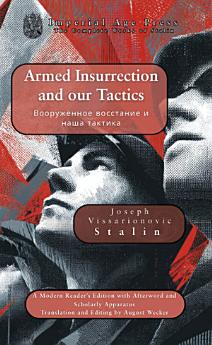Armed Insurrection and our Tactics
About this ebook
Originally published in a Bolshevik newspaper in 1905, this article’s year and place (Tsarist Russia, at mid-1905) marked a turning point in Party strategy. After quoting Marx’s dictum that proletarian victory requires revolutionary leadership, Stalin outlines specific steps: local committees must “forthwith proceed to arm the people,” organize explosives workshops, plan seizures of arms stores, and train disciplined fighters. He warns that merely preaching revolt is insufficient – the working class needs concrete organization and technical preparation. This detailed guidance was meant to strengthen the revolutionary cause in the critical phase of 1905.
Politically and historically, “Armed Insurrection” became one of Stalin’s best-known early writings (later cited in Soviet lore). At the time it circulated illegally among Bolshevik revolutionaries, but after 1917 it was hailed as prescient. It was reprinted in Stalin’s collected works and used to show that he had urged active leadership during the first Russian Revolution. Its importance lies in capturing the urgency of 1905 and in foreshadowing the Red Army and partisan warfare that Stalin would champion during the civil war. Rather than a balanced academic analysis, it reads as a rallying cry – its militaristic tone underscored the sense that the party must not simply “march at the tail” of popular fury but lead it.
This modern Critical Reader’s Edition includes an illuminating afterword tracing Stalin's intellectual relationships with revolutionary philosophers and politicians (including Hegel, Feuerbach, Engels, and Ricardo), containing unique research into his intellectual development and economic-metaphysical theories, religious impulses masquerading as materialism, a comprehensive timeline of his life and works, a glossary of Lenin-Stalinist terminology, and a detailed index of his work works. Combined with the scholarly amplifying material, this professional translation is an indispensable exploration of Stalin’s world-changing philosophy which he manifested into one of the most terrifying authoritarian regimes ever created.






